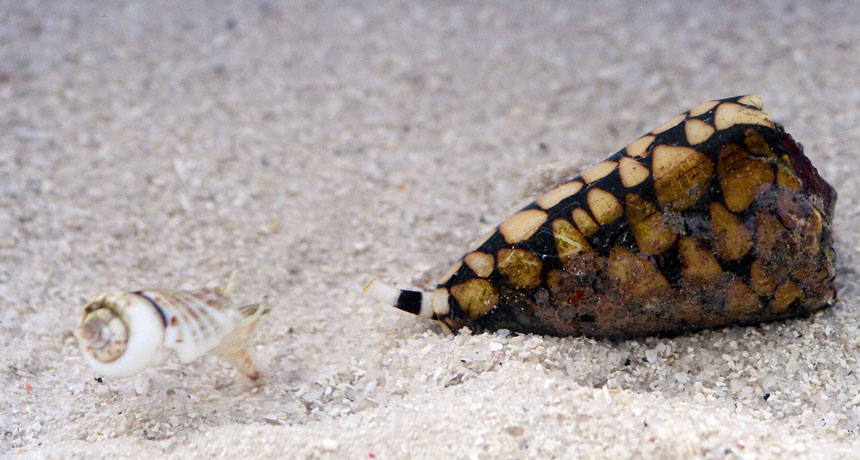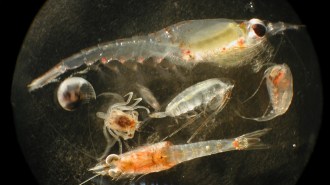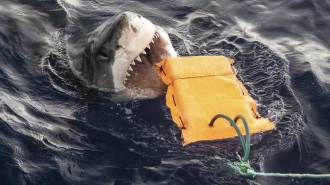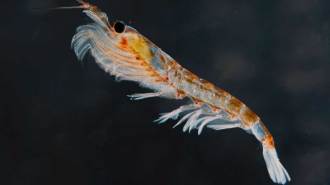Cone snails wander in circles, lose focus with boosted CO2

Cone snails (right) love to eat jumping snails (left). Research suggests that the behavior of both predator and prey may be affected by ocean acidification.
ARC CENTRE OF EXCELLENCE IN CORAL REEF STUDIES





